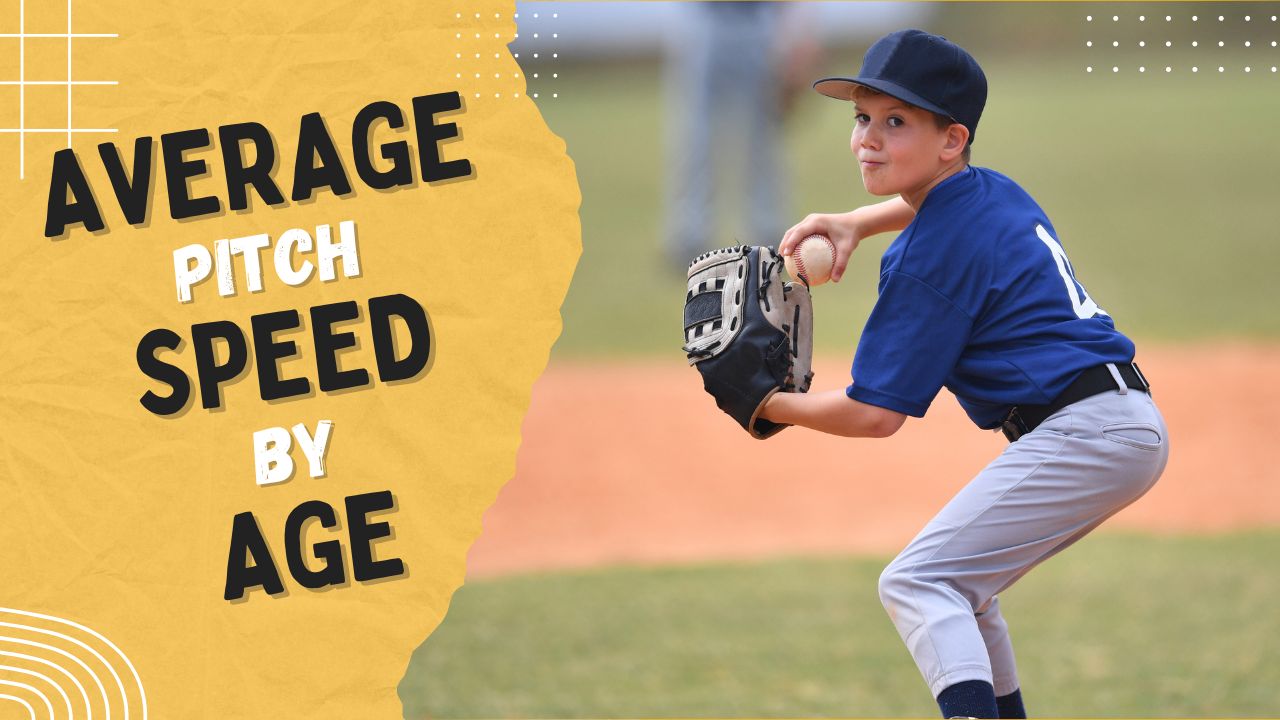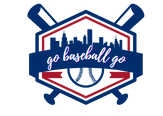
Baseball fans, parents, coaches, and ambitious young players are all very interested in the topic of average pitch speed by age. Understanding the usual pitching speeds by age is an important first step, whether you’re a player wanting to increase your pitching speed, a parent encouraging your child’s baseball goals or coaching future stars. This in-depth tutorial will explore the interesting topic of throwing speed throughout a range of age groups, from Little League to the Major Leagues. We’ll talk about Little League pitch speeds, adolescent years, and the path to the Major Leagues as well as youth throwing speed.
Youth Average Pitch Speed by Age: Building Strong Bases
The future of baseball depends on the young average pitch by age so it is very important that they lay their foundation on strong bases.
Average Pitch Speed by Age: Youth Pitching Speed Chart
It’s critical to know that there is no one-size-fits-all solution to the query, “How fast should a 10-year-old pitch?” when young pitchers take their first steps onto the mound. Setting reasonable expectations is essential since young athletes develop at varying rates.
The normal throwing speed for 9-year-olds is between 40 and 50 mph. When players reach the age of ten, they can strive for 50 to 60 mph. A pitcher should aim for an average velocity of 60 to 70 mph by the time they are 12 years old. It’s crucial to note that these statistics are only general recommendations, and certain children may naturally toss faster or slower.
Parents and coaches should prioritise ingraining sound pitching mechanics in kids from an early age. The foundation for future success is laid by concentrating on the fundamentals, such as balance, arm motion, and follow-through. Young pitchers can also benefit from age-appropriate strength and conditioning drills to help them build the physical foundation needed to increase their velocity.
Little League Pitching Speed: Dreaming of the World Series
Young players play in Little League with the hopes of making it to the Little League World Series, the zenith of youth baseball.
Little League average pitch speed by age Comparison to MLB
The skill on show at the Little League World Series may astound you. Young pitchers will be throwing fastballs at rates that rival some adult amateur leagues. But it’s important to keep in mind that these guys are still developing.
In the Little League World Series, the normal average pitching speed is between 60 and 70 mph, with some exceptional pitchers occasionally hitting the 70s or even the low 80s. These stats are amazing for young athletes, but they are still far behind the speeds seen in Major League Baseball.
From Little League to the Major Leagues is a long and difficult road that calls for not just raw speed but also superior pitching abilities, mental fortitude, and perseverance. While young players may have dreams of playing in the major leagues, it’s crucial to prioritise their average pitch speed by age and overall athletic development and keep their progress in perspective.
Ages 13-18: Coaching the Teen Year
The teenage years; 13 to 18 are the most crucial time for the development of young pitchers. They learn a lot of things which help them to build their future.
Average Pitch speed by age: In the Teenage Years
The average pitch speed by age of teenagers who are young athletes go through major bodily changes that might affect their pitching velocity. We frequently observe a wider variety of pitching speeds at this time.
Many pitchers are throwing in the 70 to 80 mph range around the age of 13, while more experienced players may reach the low 90s. Pitchers should strive for speeds between 80 and 90 mph by the time they are 15 years old, with exceptional prospects having the ability to attain speeds as high as 90 mph.
This development is significantly influenced by physical maturity. Teenagers may develop strength and coordination throughout their development spurts, which both help them move more quickly. It’s important to remember, though, that not every young pitcher will progress along the same path. While some may advance more slowly than others, some may experience significant velocity increases.
Teenage pitchers can receive help from coaches and parents by being given access to qualified coaching, strength and conditioning regimens, and rest and recuperation techniques. Additionally, during these years, mental toughness becomes more crucial as young athletes deal with the severities of high school baseball and possible college or professional aspirations.
Average Pitch Speed by Age chart: Setting Goals
We have developed a throwing velocity chart by age, illustrating normal velocities for each year of the adolescent growth phase, to assist young pitchers and their support networks. Remember that this chart just serves as a broad guide and that each person’s progress will differ:
13 years Old: 70-80 mph
14 years Old: 75-85 mph
15 years Old: 80-90 mph
16 years Old: 85-95 mph
17 years Old: 90-95 mph
Players and their coaches can use this chart to create reasonable goals for progress. It’s crucial to keep in mind that accomplishing these milestones requires persistence and patience. There may be periodic plateaus and setbacks, thus progress may not always be linear. However, young pitchers may achieve their goal velocities with perseverance and correct assistance.
Breaking the Barriers: Aiming for the Majors
Pitching velocity is the prime focus of young athletes who aim to play baseball as a profession.
How to Increase Pitching Velocity
The desire to play in the Major Leagues is more real when young pitchers hit their late teens. Baseball pitchers who want to play at the top level frequently ask, “How can I increase my pitching velocity?”
Strength and conditioning: Developing a robust, powerful physique is essential for improving pitching velocity. Young athletes should concentrate on workouts that strengthen their shoulders, core, and legs. Squats, deadlifts, plyometric exercises, and resistance band training are included in this.
Gaining muscle mass is vital, but it must be accompanied by good throwing mechanics. It’s crucial to work with knowledgeable instructors to improve pitching techniques and guarantee effectiveness. Injuries and lowered potential for velocity can result from poor mechanics.
Mental Preparation: Pitching frequently benefits from having a strong mental attitude. Young pitchers should learn how to manage stress, keep focus, and remain confident despite adversity. Mental preparation can benefit from visualization and mindfulness practices.
Practice regularly: Regular practice is necessary. Young pitchers should practice live pitching scenarios, long toss drills and bullpen sessions regularly. To build muscle memory and improve control, repetition is essential.
Rest and recovery: Overtraining increases the risk of injury and slows down development. The body must have enough time to recoup and relax in order to mend and adjust to exercise. Young pitchers should adhere to a regular schedule that includes enough nourishment and rest days.
Training for the 90 MPH Pitch: Building the 95 MPH Body
Pitchers’ training has to become more specialized and severe as they attempt to surpass the 90 mph barrier and even approach 95 mph or above. Here are some cutting-edge drills and techniques to assist young pitchers in achieving their velocity targets:
Advanced Strength Training: At this point, athletes can incorporate more challenging strength training routines, such as clean and jerk and snatch Olympic lifts. These drills emphasise explosive strength, which is essential for producing high velocity.
Work with pitching instructors who are experts in developing velocity to perform velocity-specific drills. They can offer exercises and methods that are especially aimed at faster pitches. Exercises with playballs or weighted baseballs, for instance, might be useful.
Mechanical Analysis: Regularly analyse throwing mechanics on film. Significant velocity increases may be achieved by identifying and eliminating delivery bottlenecks. Even minor changes can have a significant impact.
Proposing Biomechanics: Take into account motion capture technology-based biomechanical analyses. This cutting-edge equipment may offer in-depth perceptions of a pitcher’s action, assisting in efficiency optimisation and lowering injury risk.
Recovery and nutrition: Pay close attention to recovery and nutrition. For energy, development, and repair, a balanced diet that emphasizes macronutrients (carbohydrates, protein, and fats) and micronutrients (vitamins and minerals) is necessary. Both good sleep and committed healing techniques are essential.
Continue to practice your game strategy and mental toughness. Pitchers who want to play in the Major Leagues must strengthen their mental fortitude to deal with pressure-filled circumstances. Meditation, mental rehearsal, and visualization exercises can all help to shape the mind.
Programmers for Pitching: Enroll in specialized pitching courses that are intended to boost velocity. These programmes frequently entail extensive training regimens that cover biomechanical analysis, strength and conditioning, and throwing exercises.
Keep in mind that developing into a high-velocity pitcher takes time, and development may not always be linear. It’s critical to approach training with commitment, patience, and an emphasis on avoiding injuries. To make sure that training routines are customised to the specific requirements of the pitcher, always seek the advice of knowledgeable coaches and trainers.
Pitching Speed: Beyond the Numbers
Although average pitch speed by age is an important component of the game, it’s important to understand that effective average pitch speed by age involves more than just raw velocity.
Mastering Different Pitch Types
The ability of Major League pitchers to throw a variety of pitches, each with its distinct movement and pace, is well-known. The fastball isn’t the only pitch in a pitcher’s arsenal; there are also curveballs, sliders, changeups, cutters, and more pitches.
Expanding your pitch repertoire might be just as important as it is to increase your average pitch speed by age, Because of the variety of pitches, it might be more difficult for hitters to anticipate the pitch’s course and speed. A well-thrown breaking ball or changeup may be just as effective as a blistering fastball, if not more so.
The several pitch types that best fit a young pitcher’s style and skills should be explored and mastered. Coaches may help kids by emphasizing control and consistency as they teach them the grips and mechanics for each pitch.
Understanding Spin Rates
In baseball analysis, spin rate, a relatively new measure, has attracted a lot of interest. It describes the speed at which a baseball spins while in flight and can have a significant impact on the motion and potency of a p
A fastball with a greater spin rate, for instance, will have more “rise” and may look to defy gravity as it approaches the plate. On the other hand, an average pitch speed by age with a lower spin rate can have greater sink or lateral movement.
Understanding spin rate and how it relates to average pitch speed by age can be helpful for young pitchers. A spin rate can be improved upon, even though it tends to rise with age and experience as a result of better mechanics and grip consistency.
Average Pitch speed by age Strategy: More Than Just Speed
In addition to throwing as hard as you can, average pitch speed by age also involves outwitting the hitter and the other team. An effective pitcher must have command and control throughout their repertoire.
Young pitchers should concentrate on consistently reaching their targets, comprehending the value of working the edges of the strike zone and adjusting eye levels with various average pitch speed by age types. A pitcher’s effectiveness can be improved by creating a strong average pitch speed by age sequence where one pitch sets up the next.
Conclusion: Average pitch speed by age
In a nutshell, there are many different paths that one can take to become a successful and fast pitcher. Although average pitch speed by age is the main focus, it’s important to understand that it’s only one aspect of the puzzle. A pitcher’s arsenal must include correct mechanics, a variety of pitches, knowledge of spin rates, mental toughness, and an efficient throwing approach.
Young pitchers should approach their development with determination, patience, and a commitment to overall improvement as they work to achieve their speed targets. Young players may realize their full pitching potential with the correct coaching, dedication, and passion for the game. It’s a path full of obstacles and chances for progress.



